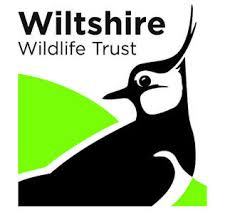
What are Landscape Partnership Schemes?
Landscape Partnership Schemes (LPS) are a National Heritage Lottery Fund grant programme for the conservation and enjoyment of areas of distinctive landscape character.
The Chase & Chalke Landscape Partnership was approved awarded £1.68 million pound grant from {link} The National Lottery Heritage Fund in 2019. The Scheme also received match-funding from partners, and so this five-year scheme totals £2.7 million pounds.
The Vision for Chase & Chalke
The vision for Chase & Chalke is to ensure this distinctive landscape survives the modern day pressures and possible future change.
The Scheme will deliver 20 projects to help improve, develop, and protect aspects of the area across heritage, landscape, and culture. One of the key aims of the Scheme is to foster a greater connection between the landscape and the people that live within it and around it, in order to inspire and invite them to play a part in caring for it.
The Chase & Chalke Team and our Partners and Funders
The scheme is managed by a core Chase & Chalke team, as well as a group of organisations and representatives across Dorset, Wiltshire, and Hampshire.
The partners and funders of the scheme are vital for its continued work. Some members of the partnership deliver certain projects or aspects of the Scheme.
Our partners are:
East Dorset Antiquarian Society
Dorset Local Nature Partnership
Cranborne Chase Landscape Trust
Our funders are:
The National Lottery Heritage Fund
J. P. Marland Charitable Trust
Cranborne Chase Landscape Trust
South West Wiltshire Area Board (Wiltshire Council)
Chase & Chalke and Cranborne Chase National Landscape
Cranborne Chase National Landscape are the lead organisation and partner of the Chase & Chalke Landscape Partnership and are hosted by Wiltshire Council.
The core Chase & Chalke team work from the same offices as the Cranborne Chase National Landscape team and work closely on delivering the Chase & Chalke projects together.
What makes the Area Special?
Landscape Partnership Schemes focus on areas that have distinctive landscape character, and Cranborne Chase has features that meet this criteria.
The Chase & Chalke Landscape Partnership Scheme projects are focused on a certain distinctive area within the Cranborne Chase National Landscape, rather than being spread over the whole of the Cranborne Chase, area which is quite large.

Hear Martin Papworth of the National Trust explain more about the Cranborne Chase and Chalke Valley Landscape Partnership Scheme (Chase & Chalke).
The Natural Landscape
The natural ecology and geology of the landscape here makes up a unique mixture that supports a vast array of species in a relatively small area.
Chalk Downland
Rare, dramatic, and supporting a dizzying array of biodiversity – the chalk escarpments of this area are expressed in distinctive sculpted landforms, open vistas, and valleys. Though sometimes dramatic, the chalk downlands offer a very accessible experience of nature.
Arable Land
The extensive arable fields are home to brown hare and farmland bird species, such as corn bunting, linnet, turtle dove, grey partridge, lapwing and yellowhammer.
Equally, rare arable flowers, such as shepherd’s needle, thrive in the Chase & Chalke area in pockets, as do the prickly poppy, rough poppy, with its distinctive seed pods, and Venus’s looking-glass, whose mirror-like oval fruits inside the seed-capsule give the plant its name.
Juniper, one of the rarest plants in the UK due to a complex set of circumstances, including climate change, loss of habitat, changes in management of suitable habitats and increasing populations of rabbits, can also be spotted, as can knotted hedge-parsley.
In spring you can see profusions of cow slip — a favourite of the Duke of Burgundy butterfly, which can be found in parts of the region, as can the nationally scarce checked-wing Marsh Fritillary. Rare bats call this area home too.
Woodlands
The landscape is overlain by a woodland mosaic that includes eye-catching hill top copses, ancient parkland trees and avenues, and extensive areas of wooded downland and ancient forest which supports internationally rare species of fungus and invertebrates.
The River Ebble
Over 80% of all the chalk streams in the world are found in southern England. Chalk streams are spring fed, rich in flora and fauna, and have very clear waters. The River Ebble, a chalk stream — a globally rare habitat — runs through the valley and is a Wild Trout Protection Zone, as well as a haven for otters and water voles.
High level of ancient habitats surviving to the modern day
Many of the habitats present in this area have survived from ancient times, these include the ancient woodlands, chalk streams and lowland chalk grasslands. This is partly due to the protection of the land as a medieval royal hunting ground.
The Historic Landscape
The landscape of Cranborne Chase is etched with the visible imprint of the past.
Nowhere else in Southern England will you find such a diverse mixture of prehistoric settlements, burial mounds, and ceremonial centres, Roman roads and villas, Dark Ages defensive boundaries, Norman Castles and Medieval Manors.
These include earthworks, former settlements, field systems and water meadows, with a high level of survival of Medieval land use patterns, woodland archaeology and a wealth of Prehistoric, Roman and Saxon archaeological sites notable for nationally important monument groups forming ceremonial complexes or monumental landscapes.
Concentrations of ancient enclosures can be found, as well as ancient woodland and former common land with numerous ancient hilltop forts and barrows.
Within the Chase & Chalke Landscape Partnership Scheme area alone there are approximately 250 Scheduled Ancient Monuments made up of grassy lumps, bumps and ditches so large that it is hard to believe they were cut by hand with flint tools.
All the features that pimple and carve scars across a mysterious landscape provide evidence to support a rich heritage, and myths and legends abound here, proving particularly compelling on a misty morning as the sun rises in the upper Avon valley.
Although most designated sites are understood, a walk through any ancient woodland or along the Shire Rack (the ancient boundary between Dorset and Wiltshire) indicates that many other features lie unrecognised and unappreciated for their cultural or natural value.
If you look hard enough you can see funnelled boundaries and entrance points where the Romans are likely to have monitored trade and passage between administrative areas. These even pre-date current county boundaries. Veteran trees were used for pagan purposes; coppice was possibly planted as a form of defence from cavalry, rather than as a woodland crop, or for pales to keep the deer in certain areas. Larches were left to be turned into lofty lookout towers to monitor deer across the ‘chase’. This very word comes from hunting, a pastime enjoyed by numerous royal figures through history — King John, King Henry VIII and King James I to name just three.
The Cultural Landscape
The Chase & Chalke area’s outstanding landscape evokes a strong sense of the iconic English countryside. The distinctive vibrant villages, profoundly rural character and historic traditions give the area its sense of place. It is a living landscape, which continues to be influenced by those who work with and manage the land and contribute to the local rural economy. The landscape provides important ecosystem services that deliver benefits such as fresh food, water, fuel and clean air, along with less tangible benefits of inspiration, health and well-being.
A Legacy of Designed Landscapes
A concentration of historic parklands, estates, and manor houses together with Historic Parks and Gardens of national and county importance, including Rushmore Park.
Literary, Artistic and Cultural Associations
The area has been celebrated in the works of numerous important artists, archaeologists, scholars and writers.
A peaceful, profoundly rural and living landscape
This is a sparsely populated and largely unspoilt area, with a strong sense of remoteness, tranquillity and expansive dark night skies, which is maintained as a living agricultural landscape.
Distinctive settlement pattern
A largely intact pre 1750 historic settlement pattern of villages with a dense concentration of listed buildings seen along the river valley, on the downland and along the scarp spring line (such as Sixpenny Handley; Tollard Royal; Ashmore; Berwick St John; Broad Chalke; Iwerne Minster; Bishopstone; Coombe Bissett; Tarrant Gunville; Bowerchalke; and Martin).
A Strong sense of place and local distinctiveness
This is represented by the use of local vernacular building styles and materials (knapped flint, brick, cob, clunch, clay tiles and straw thatch) and small-scale vernacular features (such as sunken lanes and distinctive black and white signposts).
With thanks to all our partners and funders
![]()


![]()
![]()

![]()
![]()


![]()
![]()
![]()
![]()


![]()




Contact the Chase & Chalke team.
Return to the Chase & Chalke main page.
